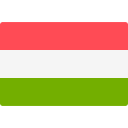Age vaping: the relationship between age and vapes
Vapes have rapidly gained popularity in recent years, and the discussion of ‘age vaping’ has become more and more common. As exposure to vapes continues to rise among young people, the community is beginning to focus on a central question: what does it mean to use vapes at different ages?
age vaping is not simply a matter of age limits, but also has health, legal, marketing and cultural implications. This article provides a comprehensive analysis of age vaping to help you understand the underlying meaning of this keyword.
The legal background and origins of age vaping
When it comes to age vaping, the first thing to understand is its legal restrictions. Many countries have clear age regulations on the sale and use of e-cigarettes. In the United States, most states set the legal vaping age at 21; in the United Kingdom, the minimum age is 18. In other European countries, age vaping standards are not entirely consistent, but it is common for vape products not to be sold to minors.
The core purpose of this age limit is to protect young people from early exposure to nicotine products. Studies have shown that younger brains are more sensitive to nicotine and that long-term use may affect brain development. Therefore, clarifying the legal underpinnings of age vaping is an important part of public health policy.
age vaping and adolescent health risks
A major concern for many parents and educators is the health risks associated with early exposure of adolescents to vape. age vaping's controversy stems from the rapid growth of this group. Although many brands advertise as tar-free and low-hazard, this does not mean that vapes are completely harmless.
For teens, nicotine intake may affect memory, concentration and emotional control. Research also suggests that teens who develop a dependence through age vaping are more likely to turn to traditional cigarettes or other higher-risk products. Therefore, the need to discuss age vaping is not only about regulating a market practice, but also about taking responsibility for the health of the next generation.
How age vaping affects e-cigarette brand strategy
Brands must also be clear about the legal and ethical boundaries of age vaping when marketing. Most well-known vape brands include ‘over 18s’ or ‘adult products’ in their packaging, advertising and online content. This is not only necessary to comply with regulations, but is also a sign of brand credibility.
Many brands are also proactively placing age restrictions on social media platforms and age-verification pages on their websites in order to focus their marketing on legitimate consumers. Being compliant not only avoids legal risks, but also creates a positive image in the increasingly sensitive context of age vaping.
Social controversy and cultural change in age vaping
In many Western countries, vape is considered a healthier alternative to cigarettes and has even become a trend symbol. But this also poses a problem: as vape is seen as fashionable by young people, age vaping becomes more difficult to regulate. Short videos and graphic content on social media frequently show vape products, making more and more teenagers curious or wanting to imitate them.
Some young bloggers have even filmed unboxing and taste reviews around vape, which has inadvertently magnified the grey area of age vaping. In the face of such cultural infiltration, regulators, parents and educational institutions need to be more vigilant and build more public discussion mechanisms to guide the correct perception.
Market Trends and Data Observations on Age Vaping
According to a study released in 2024, 18-24 year olds are still the mainstay of vape consumers. This means that while age vaping regulations are strictly enforced, brands are also looking for strategies to increase user retention in the legal market.
For example, some brands have launched nicotine-free vape products aimed at adults who want to experience the flavour but don't want to inhale nicotine. This strategy meets consumer demand while exploring the boundaries of age vaping.
AGE VAPING AND PARENTAL ROLES
Homeschooling plays an integral role in the age vaping conversation. Many parents do not understand vape products, are not aware of the legal details of age vaping, and have difficulty communicating effectively with their children.
In fact, it is the responsibility of parents to understand the basics of vape, market trends and possible ways for their children to access vape. Being proactive in communicating with your child and sharing knowledge about age vaping is not about controlling, it is about building trust.
Response to age vaping at the school and community level
In addition to the family, schools and communities should also play a role in the management of age vaping. Schools can make students aware of the risks behind age vaping through lectures on the dangers of vaping, posting no-smoking signs, and setting up reporting mechanisms.
Communities can also join forces to conduct public service campaigns to promote knowledge about age vaping and establish a regulatory system for e-cigarette retailers to prevent minors from easily purchasing vape products.
The future direction of age vaping
As countries strengthen their regulation of e-cigarettes, the future of age vaping will develop in a stricter, more systematic and refined direction. We can expect to see further integration of technology into age vaping regulation, such as restricting online purchases through facial recognition and identity verification.
Brands will also make design and packaging adjustments to make them less appealing to minors. For example, they will adopt unisex packaging and avoid using cartoon designs or dessert names to avoid the age vaping controversy at its source.
How age vaping affects user choice
For consumers, being aware of age vaping is not just a matter of compliance, but also a criterion for choosing a responsible brand. If a brand can't guarantee that its products won't fall into the hands of minors, then its reputation and quality are questionable.
Choosing a brand with a clear age verification mechanism, a good reputation in the market, and a proactive approach to social responsibility is a responsible behaviour for yourself and society. age vaping is not about restricting consumers, it is a necessary step to improve the quality of the vape market as a whole.
The ethical and commercial balance of age vaping
Finally, we need to recognise that age vaping is an issue that involves a balance between ethics and business. While pursuing profits, companies must also take on social responsibility. Especially in an industry like vape, which is closely related to health, age vaping is more like a bottom line, and it is the bottom line that will lead to a sustainable future.
Enterprises should clearly communicate the bottom line of age vaping in their publicity, and consumers should also take age vaping into consideration when making their choices. Only through the joint efforts of all parties can we build a legal, healthy and orderly e-cigarette market.
Conclusion
Age vaping is a core topic in the vape industry that involves law, health, culture, education, and the market. Whether you're a business owner or a consumer, understanding age vaping and taking reasonable measures to address it is the key to building a healthier vape environment. The future of the vape market is destined to be more regulated and healthier, and age vaping will always be an important part of that process.






